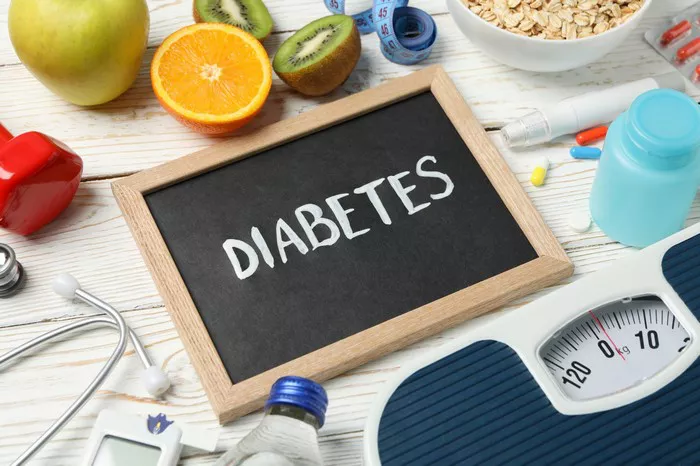Insulin resistance is a condition where the body’s cells become less responsive to the hormone insulin, leading to impaired glucose metabolism and an increased risk of type 2 diabetes and other metabolic disorders. Understanding the causes of insulin resistance is essential for developing strategies to prevent and manage this condition effectively. In this article, we will delve into the various factors that contribute to the development of insulin resistance, including genetic predisposition, lifestyle factors, and underlying health conditions.
What is Insulin Resistance?
Insulin is a hormone produced by the pancreas that plays a crucial role in regulating blood glucose levels. It facilitates the uptake of glucose from the bloodstream into cells, where it is used for energy production or stored as glycogen. In individuals with insulin resistance, cells in muscles, fat, and the liver do not respond adequately to insulin, resulting in higher blood glucose levels. Over time, this can lead to the development of type 2 diabetes, as the pancreas struggles to produce enough insulin to overcome the resistance.
Genetic Predisposition
1. Family History and Genetics
One of the primary factors contributing to insulin resistance is genetic predisposition. Studies have shown that a family history of type 2 diabetes and insulin resistance increases the likelihood of developing these conditions. Specific genetic variations can affect the function of insulin receptors, glucose transporters, and other proteins involved in glucose metabolism, making some individuals more susceptible to insulin resistance.
2. Ethnicity
Certain ethnic groups are at a higher risk of developing insulin resistance and type 2 diabetes. For example, individuals of African, Hispanic, Native American, and Asian descent have a higher prevalence of these conditions compared to Caucasians. Genetic factors unique to these populations may contribute to the increased risk.
Lifestyle Factors
1. Physical Inactivity
A sedentary lifestyle is a significant contributor to insulin resistance. Regular physical activity enhances insulin sensitivity by increasing glucose uptake into muscles and improving the function of insulin receptors. Conversely, a lack of physical activity reduces insulin sensitivity, leading to higher blood glucose levels.
2. Poor Diet
Diet plays a crucial role in the development of insulin resistance. Diets high in refined carbohydrates, added sugars, and unhealthy fats contribute to obesity and insulin resistance. Excessive consumption of sugary beverages, processed foods, and high-calorie meals can lead to weight gain, particularly around the abdomen, which is closely associated with insulin resistance.
3. Obesity
Obesity, especially central or abdominal obesity, is a major risk factor for insulin resistance. Excess fat, particularly visceral fat, releases inflammatory cytokines and other bioactive substances that interfere with insulin signaling pathways. This chronic low-grade inflammation contributes to the development of insulin resistance and metabolic dysfunction.
4. Smoking
Smoking is another lifestyle factor that has been linked to insulin resistance. Nicotine and other harmful chemicals in cigarettes can impair insulin signaling and promote inflammation, leading to reduced insulin sensitivity.
Underlying Health Conditions
1. Metabolic Syndrome
Metabolic syndrome is a cluster of conditions, including insulin resistance, abdominal obesity, high blood pressure, high triglycerides, and low HDL cholesterol levels. Individuals with metabolic syndrome are at a higher risk of developing type 2 diabetes and cardiovascular diseases. The presence of multiple risk factors exacerbates insulin resistance and metabolic dysfunction.
2. Polycystic Ovary Syndrome (PCOS)
PCOS is a common hormonal disorder in women of reproductive age, characterized by irregular menstrual periods, excess androgen levels, and polycystic ovaries. Insulin resistance is a common feature of PCOS, contributing to hyperinsulinemia and the risk of developing type 2 diabetes.
3. Sleep Disorders
Sleep disorders, such as sleep apnea and chronic sleep deprivation, have been linked to insulin resistance. Poor sleep quality and insufficient sleep can disrupt glucose metabolism and increase the risk of obesity, further contributing to insulin resistance.
4. Non-Alcoholic Fatty Liver Disease (NAFLD)
NAFLD is a condition characterized by the accumulation of fat in the liver, unrelated to alcohol consumption. It is closely associated with insulin resistance and metabolic syndrome. The presence of fat in the liver impairs insulin signaling and contributes to hepatic insulin resistance.
Hormonal and Metabolic Factors
1. Adipokines and Cytokines
Adipose tissue, particularly visceral fat, secretes various bioactive substances known as adipokines and cytokines. These include tumor necrosis factor-alpha (TNF-α), interleukin-6 (IL-6), and resistin, which promote inflammation and interfere with insulin signaling. Adiponectin, another adipokine, has anti-inflammatory and insulin-sensitizing properties, but its levels are often reduced in obesity and insulin resistance.
2. Free Fatty Acids
Elevated levels of free fatty acids in the bloodstream, often due to increased lipolysis in adipose tissue, contribute to insulin resistance. Free fatty acids can impair insulin signaling and promote lipid accumulation in muscles and the liver, further exacerbating insulin resistance.
3. Mitochondrial Dysfunction
Mitochondria are the energy-producing organelles in cells, and their dysfunction can contribute to insulin resistance. Impaired mitochondrial function reduces the capacity for oxidative phosphorylation and energy production, leading to increased production of reactive oxygen species (ROS) and oxidative stress, which can damage insulin signaling pathways.
Inflammation and Oxidative Stress
1. Chronic Inflammation
Chronic low-grade inflammation is a key driver of insulin resistance. Inflammatory cytokines, released by adipose tissue and immune cells, interfere with insulin signaling pathways and promote insulin resistance. Obesity and excess fat accumulation exacerbate inflammation, creating a vicious cycle that worsens insulin resistance.
2. Oxidative Stress
Oxidative stress, resulting from an imbalance between the production of ROS and the body’s antioxidant defenses, contributes to insulin resistance. ROS can damage cellular components, including proteins, lipids, and DNA, impairing insulin signaling and glucose metabolism.
Medications and Medical Treatments
1. Glucocorticoids
Glucocorticoids, a class of steroid hormones used to treat inflammatory and autoimmune conditions, can induce insulin resistance. These medications promote gluconeogenesis and increase blood glucose levels while impairing insulin sensitivity.
2. Antipsychotic Medications
Certain antipsychotic medications, particularly atypical antipsychotics, have been associated with weight gain and insulin resistance. These medications can alter glucose metabolism and increase the risk of developing type 2 diabetes.
3. HIV Medications
Some antiretroviral medications used to treat HIV infection can cause metabolic disturbances, including insulin resistance. The mechanisms are complex and may involve alterations in lipid metabolism and mitochondrial function.
Age and Hormonal Changes
1. Aging
Aging is associated with a decline in insulin sensitivity. Several factors contribute to age-related insulin resistance, including changes in body composition, reduced physical activity, and alterations in hormonal levels.
2. Menopause
In women, menopause is associated with hormonal changes that can impact insulin sensitivity. The decline in estrogen levels during menopause is linked to increased abdominal fat accumulation and a higher risk of insulin resistance and metabolic syndrome.
Genetic and Epigenetic Factors
1. Genetic Mutations
Specific genetic mutations can directly affect insulin signaling pathways and glucose metabolism, leading to insulin resistance. For example, mutations in the insulin receptor gene can impair insulin binding and signaling.
2. Epigenetic Modifications
Epigenetic modifications, such as DNA methylation and histone acetylation, can influence gene expression and contribute to the development of insulin resistance. Environmental factors, such as diet and lifestyle, can induce epigenetic changes that affect insulin sensitivity.
See also: What Is a Good Night Snack for a Diabetic?
Conclusion
Insulin resistance is a multifactorial condition with a complex interplay of genetic, lifestyle, hormonal, and environmental factors. Understanding the causes of insulin resistance is crucial for developing effective prevention and management strategies. Addressing modifiable risk factors, such as physical inactivity, poor diet, and obesity, can significantly reduce the risk of developing insulin resistance and its associated complications.
Healthcare providers play a vital role in educating patients about the importance of maintaining a healthy lifestyle, regular physical activity, and balanced nutrition to improve insulin sensitivity. Early identification and management of underlying health conditions, such as metabolic syndrome, PCOS, and sleep disorders, are essential for preventing the progression of insulin resistance to type 2 diabetes and other metabolic disorders.
By adopting a comprehensive approach that includes lifestyle modifications, medical management, and ongoing monitoring, individuals can effectively manage insulin resistance and improve their overall metabolic health. Continued research into the underlying mechanisms and contributing factors of insulin resistance will further enhance our ability to prevent and treat this condition, ultimately improving the health and well-being of affected individuals.
Related topics:
What Medications Similar to Metformin



























